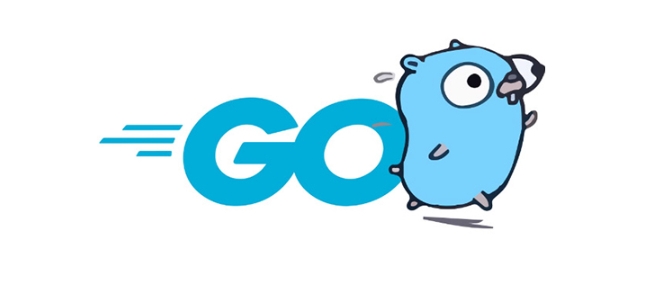Go is better than Node.js in performance and concurrency processing, suitable for high throughput and low latency scenarios; 2. Node.js has high development efficiency and rich ecosystem, suitable for rapid iteration of projects; 3. Node.js has a smooth learning curve, Go needs to master concurrency models but is more stable; 4. Go is selected for high concurrency microservices and cloud native systems, and real-time systems are both possible, and Node.js is selected for API services and file processing; the choice should be based on project requirements, team skills and maintenance goals. Language is only a tool, and the key is to match scenarios and team capabilities.

Go and Node.js are both very popular technologies in modern back-end development, but their design concepts, performance characteristics and applicable scenarios are very different. Which one to choose depends on your project needs, team skills and long-term maintenance goals. The following is a comparison from several key dimensions to help you make more suitable choices.

1. Performance and concurrent processing
Go has obvious advantages :
- Go is a compiled language that is directly compiled into machine code and has high execution efficiency.
- With built-in goroutine and channel , the lightweight concurrency model allows high-concurrency scenarios (such as microservices, real-time systems) to perform very well.
- Fast startup speed and low memory usage, suitable for resource-sensitive deployments.
Node.js performance :

- JavaScript based on V8 engine, runs on the interpreter and performs worse than Go.
- Use event loop single-threaded non-blocking I/O , suitable for I/O-intensive tasks (such as API gateways, file upload services).
- CPU-intensive tasks (such as image processing, encrypted computing) will block the main thread and require
worker_threadsremediation, but are not as support as Go native.
? If you pursue high throughput, low latency and strong concurrency, Go is better .
2. Development efficiency and ecosystem
Node.js is more flexible and quick to get started :

- JavaScript/TypeScript is unified in the full stack, with consistent front-end and back-end languages, and easy team collaboration.
- npm is the largest package management ecosystem in the world, with almost everything you have.
- It has strong rapid prototype development capabilities and is suitable for rapid iteration of MVP or entrepreneurial projects.
Features of Go :
- The grammar is concise but more "conservative", emphasizing clarity and maintainability.
- The standard library is powerful (HTTP, encryption, concurrency, etc. are used out of the box), with small number of third-party packages but high quality.
- Compilation-time type checking is strict, reducing runtime errors, and is suitable for long-term maintenance of large systems.
? If you attach importance to development speed and ecological richness, Node.js is more friendly ; if you pursue code stability and maintainability, Go is more reliable .
3. Learning curve adapts to team
- Node.js : Front-end developers make almost zero cost entry, and TypeScript also makes back-end types safer.
- Go : The syntax is simple and beginners can get started in a few days, but concurrent models (goroutines, channels) need to be understood.
- The team already has a JS technology stack? Continuing to use Node.js is cheaper.
- The team pursues performance, stability, or has Golang experience? Go is natural selection.
? Suggestions: Choose Node.js for small teams or full-stack projects; choose Go for medium and large systems or performance-sensitive services.
4. Comparison of typical usage scenarios
| Scene | Recommended technology | reason |
|---|---|---|
| High concurrency microservices | ? Go | goroutine is lightweight and has high resource utilization |
| Real-time system (such as chat, push) | ?? Both are OK | Node.js event-driven is good, but Go is more stable and scalable |
| REST/GraphQL API | ? Node.js | Rapid development, Express/NestJS mature |
| CLI tools, data processing services | ? Go | Compile into single binary, easy to deploy |
| File processing, proxy gateway | ? Node.js | Non-blocking I/O is suitable for large number of file reading and writing |
| Distributed systems, cloud-native services | ? Go | Kubernetes, Docker, etcd are all written in Go |
Summary: How to choose?
-
Choose Go if you:
- Need for high performance and high concurrency
- Build a long-term maintenance middle and backend system
- Preference for strong typing, compile-time checking
- Deploy in resource-constrained environments (such as containers, edge computing)
-
Choose Node.js if you:
- Want to develop MVP quickly
- Team is familiar with JavaScript/TypeScript
- Mainly I/O-intensive services (such as API forwarding, lightweight business logic)
- Unified technology stack for full stack to improve collaboration efficiency
Basically that's it. It is not complicated, but it is easy to ignore: language is just a tool, and the key is to match the team and the scene .
If your project may face high concurrency in the future or require deep optimization, Go will have a higher return on investment; if you pursue rapid online and flexible iteration, Node.js is still one of the most practical choices.
The above is the detailed content of Go vs. Node.js for Backend Development. For more information, please follow other related articles on the PHP Chinese website!

Hot AI Tools

Undress AI Tool
Undress images for free

Undresser.AI Undress
AI-powered app for creating realistic nude photos

AI Clothes Remover
Online AI tool for removing clothes from photos.

Clothoff.io
AI clothes remover

Video Face Swap
Swap faces in any video effortlessly with our completely free AI face swap tool!

Hot Article

Hot Tools

Notepad++7.3.1
Easy-to-use and free code editor

SublimeText3 Chinese version
Chinese version, very easy to use

Zend Studio 13.0.1
Powerful PHP integrated development environment

Dreamweaver CS6
Visual web development tools

SublimeText3 Mac version
God-level code editing software (SublimeText3)

Hot Topics
 Strategies for Integrating Golang Services with Existing Python Infrastructure
Jul 02, 2025 pm 04:39 PM
Strategies for Integrating Golang Services with Existing Python Infrastructure
Jul 02, 2025 pm 04:39 PM
TointegrateGolangserviceswithexistingPythoninfrastructure,useRESTAPIsorgRPCforinter-servicecommunication,allowingGoandPythonappstointeractseamlesslythroughstandardizedprotocols.1.UseRESTAPIs(viaframeworkslikeGininGoandFlaskinPython)orgRPC(withProtoco
 Understanding the Performance Differences Between Golang and Python for Web APIs
Jul 03, 2025 am 02:40 AM
Understanding the Performance Differences Between Golang and Python for Web APIs
Jul 03, 2025 am 02:40 AM
Golangofferssuperiorperformance,nativeconcurrencyviagoroutines,andefficientresourceusage,makingitidealforhigh-traffic,low-latencyAPIs;2.Python,whileslowerduetointerpretationandtheGIL,provideseasierdevelopment,arichecosystem,andisbettersuitedforI/O-bo
 Is golang frontend or backend
Jul 08, 2025 am 01:44 AM
Is golang frontend or backend
Jul 08, 2025 am 01:44 AM
Golang is mainly used for back-end development, but it can also play an indirect role in the front-end field. Its design goals focus on high-performance, concurrent processing and system-level programming, and are suitable for building back-end applications such as API servers, microservices, distributed systems, database operations and CLI tools. Although Golang is not the mainstream language for web front-end, it can be compiled into JavaScript through GopherJS, run on WebAssembly through TinyGo, or generate HTML pages with a template engine to participate in front-end development. However, modern front-end development still needs to rely on JavaScript/TypeScript and its ecosystem. Therefore, Golang is more suitable for the technology stack selection with high-performance backend as the core.
 How to install Go
Jul 09, 2025 am 02:37 AM
How to install Go
Jul 09, 2025 am 02:37 AM
The key to installing Go is to select the correct version, configure environment variables, and verify the installation. 1. Go to the official website to download the installation package of the corresponding system. Windows uses .msi files, macOS uses .pkg files, Linux uses .tar.gz files and unzip them to /usr/local directory; 2. Configure environment variables, edit ~/.bashrc or ~/.zshrc in Linux/macOS to add PATH and GOPATH, and Windows set PATH to Go in the system properties; 3. Use the government command to verify the installation, and run the test program hello.go to confirm that the compilation and execution are normal. PATH settings and loops throughout the process
 Resource Consumption (CPU/Memory) Benchmarks for Typical Golang vs Python Web Services
Jul 03, 2025 am 02:38 AM
Resource Consumption (CPU/Memory) Benchmarks for Typical Golang vs Python Web Services
Jul 03, 2025 am 02:38 AM
Golang usually consumes less CPU and memory than Python when building web services. 1. Golang's goroutine model is efficient in scheduling, has strong concurrent request processing capabilities, and has lower CPU usage; 2. Go is compiled into native code, does not rely on virtual machines during runtime, and has smaller memory usage; 3. Python has greater CPU and memory overhead in concurrent scenarios due to GIL and interpretation execution mechanism; 4. Although Python has high development efficiency and rich ecosystem, it consumes a high resource, which is suitable for scenarios with low concurrency requirements.
 How to build a GraphQL API in golang
Jul 08, 2025 am 01:03 AM
How to build a GraphQL API in golang
Jul 08, 2025 am 01:03 AM
To build a GraphQLAPI in Go, it is recommended to use the gqlgen library to improve development efficiency. 1. First select the appropriate library, such as gqlgen, which supports automatic code generation based on schema; 2. Then define GraphQLschema, describe the API structure and query portal, such as defining Post types and query methods; 3. Then initialize the project and generate basic code to implement business logic in resolver; 4. Finally, connect GraphQLhandler to HTTPserver and test the API through the built-in Playground. Notes include field naming specifications, error handling, performance optimization and security settings to ensure project maintenance
 Choosing a Microservice Framework: KitEx/GoMicro vs Python Flask/FastAPI Approaches
Jul 02, 2025 pm 03:33 PM
Choosing a Microservice Framework: KitEx/GoMicro vs Python Flask/FastAPI Approaches
Jul 02, 2025 pm 03:33 PM
The choice of microservice framework should be determined based on project requirements, team technology stack and performance expectations. 1. Given the high performance requirements, KitEx or GoMicro of Go is given priority, especially KitEx is suitable for complex service governance and large-scale systems; 2. FastAPI or Flask of Python is more flexible in rapid development and iteration scenarios, suitable for small teams and MVP projects; 3. The team's skill stack directly affects the selection cost, and if there is already Go accumulation, it will continue to be more efficient. The Python team's rash conversion to Go may affect efficiency; 4. The Go framework is more mature in the service governance ecosystem, suitable for medium and large systems that need to connect with advanced functions in the future; 5. A hybrid architecture can be adopted according to the module, without having to stick to a single language or framework.
 Go sync.WaitGroup example
Jul 09, 2025 am 01:48 AM
Go sync.WaitGroup example
Jul 09, 2025 am 01:48 AM
sync.WaitGroup is used to wait for a group of goroutines to complete the task. Its core is to work together through three methods: Add, Done, and Wait. 1.Add(n) Set the number of goroutines to wait; 2.Done() is called at the end of each goroutine, and the count is reduced by one; 3.Wait() blocks the main coroutine until all tasks are completed. When using it, please note: Add should be called outside the goroutine, avoid duplicate Wait, and be sure to ensure that Don is called. It is recommended to use it with defer. It is common in concurrent crawling of web pages, batch data processing and other scenarios, and can effectively control the concurrency process.






